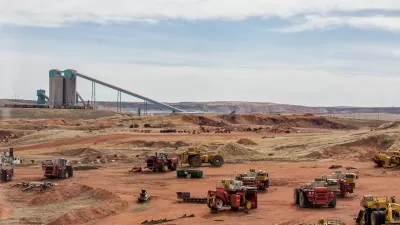Many affordable housing developers worry Trump’s proposed taxes on imports and crackdown on immigration will be detrimental to the industry. Others hope deregulation reduces development costs enough to offset those effects. What’s the most likely outcome?

Housing industry experts warn that President Trump's Day One executive orders and promised policies could severely impact affordable housing development through a combination of immigration enforcement and trade policies. According to a new Shelterforce investigation by Shelby R. King, the affordable housing sector faces unique vulnerabilities to these changes.
Key takeaways:
- Proposed 25 percent tariffs on Canadian and Mexican imports, plus 60 percent on Chinese goods, could significantly increase construction costs. The National Association of Home Builders estimates a 10 percent tariff would add $3.2 billion to building material costs.
- Mass deportations could exacerbate the existing construction labor shortage, particularly impacting affordable housing developers who often can't compete with luxury developers for scarce workers.
- While the administration promises deregulation will lower costs, experts question whether regulatory cuts could offset rising material and labor expenses. Most impactful regulations are local, not federal.
- Affordable housing developers face tighter margins than market-rate developers and can't simply raise rents to absorb higher costs. Housing Partnership Network warns of potential "widespread bankruptcies" if costs continue rising without additional resources.
The article features insights from industry leaders including the National Housing Conference, Housing Partnership Network, National Association of Home Builders, and housing policy experts who explain why affordable housing development could be particularly vulnerable to these combined pressures.
FULL STORY: How Might Tariffs and Deportations Affect Affordable Housing Development?

Trump Administration Could Effectively End Housing Voucher Program
Federal officials are eyeing major cuts to the Section 8 program that helps millions of low-income households pay rent.

Planetizen Federal Action Tracker
A weekly monitor of how Trump’s orders and actions are impacting planners and planning in America.

The 120 Year Old Tiny Home Villages That Sheltered San Francisco’s Earthquake Refugees
More than a century ago, San Francisco mobilized to house thousands of residents displaced by the 1906 earthquake. Could their strategy offer a model for the present?

HSR Reaches Key Settlement in Northern California City
The state’s high-speed rail authority reached an agreement with Millbrae, a key city on the train’s proposed route to San Francisco.

Washington State Legislature Passes Parking Reform Bill
A bill that would limit parking requirements for new developments is headed to the governor’s desk.

Missouri Law Would Ban Protections for Housing Voucher Users
A state law seeks to overturn source-of-income discrimination bans passed by several Missouri cities.
Urban Design for Planners 1: Software Tools
This six-course series explores essential urban design concepts using open source software and equips planners with the tools they need to participate fully in the urban design process.
Planning for Universal Design
Learn the tools for implementing Universal Design in planning regulations.
Ada County Highway District
Clanton & Associates, Inc.
Jessamine County Fiscal Court
Institute for Housing and Urban Development Studies (IHS)
City of Grandview
Harvard GSD Executive Education
Toledo-Lucas County Plan Commissions
Salt Lake City
NYU Wagner Graduate School of Public Service





























